
|
Astronomy Picture Of the Day (APOD)
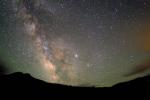 Jupiter, Vesta, and the Milky Way
Jupiter, Vesta, and the Milky Way
25.05.2007
In this gorgeous skyscape, gas giant Jupiter along with the stars and cosmic dust clouds of the Milky Way hang over the southern horizon in the early morning hours as seen from Stagecoach, Colorado, USA. Recorded on Thursday, Jupiter is the brightest object near picture center.
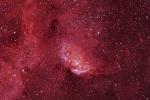 The Tulip in the Swan
The Tulip in the Swan
24.05.2007
This expansive (1-degree wide) telescopic view looks out along the plane of our Milky Way Galaxy toward the nebula rich constellation Cygnus the Swan. It is centered on a bright hydrogen emission region recorded in the 1959 catalog by astronomer Stewart Sharpless as Sh2-101.
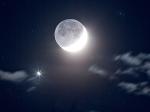 Venus Near the Moon
Venus Near the Moon
23.05.2007
The two brightest objects in the night sky appeared to go right past each other last week. On the night of May 19, Earth's Moon and the planet Venus were visible in the same part of the sky, and at closest approach were less than one degree apart.
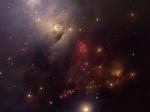 In the Center of Reflection Nebula NGC 1333
In the Center of Reflection Nebula NGC 1333
21.05.2007
The dust is so thick in the center of NGC 1333 that you can hardly see the stars forming. Conversely, the very dust clouds that hide the stars also reflects their optical light, giving NGC 1333's predominantly blue glow the general designation of a reflection nebula.
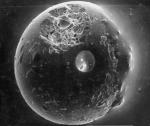 A Spherule from the Earths Moon
A Spherule from the Earths Moon
20.05.2007
How did this spherule come to be on the Moon? When a meteorite strikes the Moon, the energy of the impact melts some of the splattering rock, a fraction of which might cool into tiny glass beads. Many of these glass beads were present in lunar soil samples returned to Earth by the Apollo missions.
 Circum axial Leaf Trails
Circum axial Leaf Trails
19.05.2007
Are photographs of star trails really evidence of the Earth's rotation about its axis? Yes they are, and science journalist Trudy E. Bell discovered that there is a simple way to demonstrate this, if you have the stomach for it.
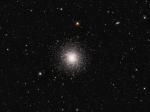 M13: The Great Globular Cluster in Hercules
M13: The Great Globular Cluster in Hercules
18.05.2007
In 1714, Edmond Halley noted that M13 "shows itself to the naked eye when the sky is serene and the Moon absent." Of course, M13 is now modestly recognized as the Great Globular Cluster in Hercules, one of the brightest globular star clusters in the northern sky.
 The Milky Way Near the Southern Cross
The Milky Way Near the Southern Cross
17.05.2007
The glow of the southern Milky Way and the well-known Southern Cross are featured in this colorful skyscape recorded in April over La Frontera, Chile. The Southern Cross (Crux) itself is at the right of the 20 degree wide field of view, topped by bright, yellowish star Gamma Crucis.
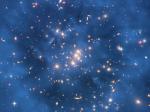 Dark Matter Ring Modeled around Galaxy Cluster CL0024 17
Dark Matter Ring Modeled around Galaxy Cluster CL0024 17
16.05.2007
How do we know that dark matter isn't just normal matter exhibiting strange gravity? A new observation of gravitationally magnified faint galaxies far in the distance behind a massive cluster of galaxies is shedding new dark on the subject.
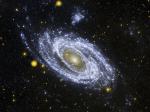 Bright Spiral Galaxy M81 in Ultraviolet from Galex
Bright Spiral Galaxy M81 in Ultraviolet from Galex
15.05.2007
Where are the hot stars in M81, one of the closest major spiral galaxies? To help find out, astronomers took a deep image in ultraviolet light of the sprawling spiral with the Earth-orbiting Galex telescope.
|
January February March April May June July August September October November December |
||||||||||||||||||||||||||||||||||||||||||||||||||||||||